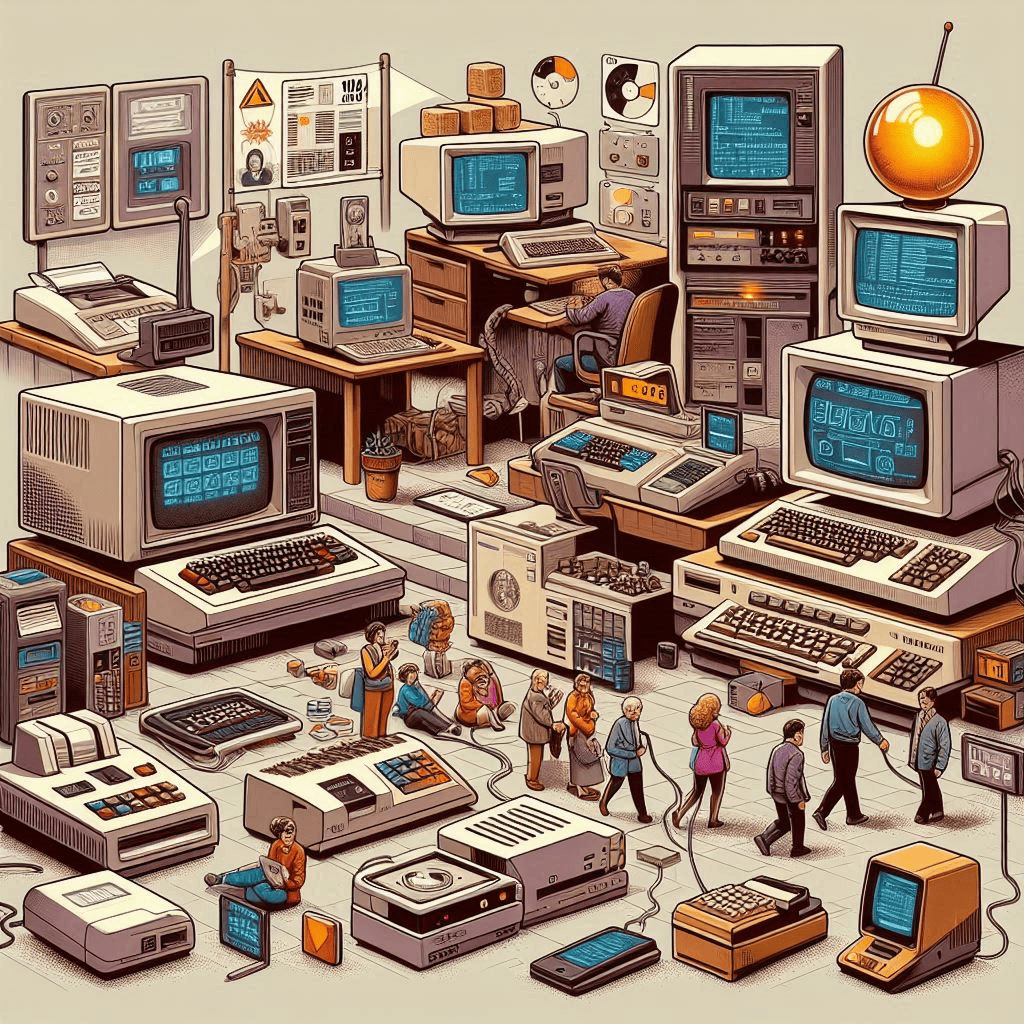Personal Computers: The 1984 Milestone and Its Impact on Cloud Computing

The year 1984 marked a pivotal moment in the evolution of personal computers, significantly influencing modern cloud computing. During this time, several technological breakthroughs shaped the foundation of IT infrastructure, making computing more accessible and efficient. For instance, the introduction of graphical user interfaces (GUIs) allowed users to interact with computers more intuitively. Additionally, advancements in networking, artificial intelligence, and computing power further accelerated the adoption of digital systems. As a result, businesses and individuals could now leverage personal computers for tasks that were once limited to large enterprises. Eventually, these innovations laid the groundwork for cloud-based solutions, which continue to transform industries worldwide, including in the UAE.
1. The Rise of Personal Computers and Cloud Adoption
The emergence of personal computers revolutionized the way individuals and businesses interacted with technology. Companies like Apple, with the Macintosh, and IBM played a crucial role in making computing more user-friendly. The introduction of graphical user interfaces (GUIs) simplified navigation, making technology accessible to non-technical users.
Additionally, the software industry responded to the rise of personal computers by developing applications for word processing, data management, and design. This expansion demonstrated that computing was no longer limited to enterprises but could empower individuals to perform advanced tasks, eventually leading to the demand for cloud-based services.
2. Distributed Network Systems and Cloud Computing
In 1984, the concept of distributed network systems gained momentum as organizations sought better ways to connect and share computing resources. The expansion of local area networks (LANs) allowed businesses to interconnect personal computers, improving efficiency and collaboration.
This shift toward networking technologies paved the way for cloud computing, as enterprises realized the benefits of shared resources, centralized data management, and remote access. The integration of distributed computing with cloud solutions in the UAE continues to enhance business productivity today.
3. The Transition to 32-Bit Computing and Its Impact
The industry saw a shift from 16-bit to 32-bit computing, marking a significant improvement in processing capabilities. This transition enabled personal computers to handle more complex applications, making them suitable for scientific computing, graphics rendering, and database management.
With improved computing power, developers began to explore software that required greater efficiency, leading to the creation of applications that later became the foundation of cloud-based solutions. This technological shift was instrumental in setting the stage for modern cloud computing platforms
4. Advances in CAD/CAM and Cloud Integration
The advancement of Computer-Aided Design (CAD) and Computer-Aided Manufacturing (CAM) in 1984 demonstrated the increasing role of personal computers in industrial applications. These technologies enabled businesses to develop detailed product models, reducing production costs and errors.
However, the lack of standardization in CAD/CAM systems led to fragmentation, slowing down innovation. Today, cloud computing resolves these challenges by offering centralized storage, collaborative environments, and remote access for designers and manufacturers, making product development more streamlined.
5. Robotics and the Role of Cloud Computing
The 1984 advancements in robotics signaled a shift toward automation in industries, as organizations sought to enhance efficiency through intelligent machines. AI-powered robotic systems began to gain traction in manufacturing, reducing human labor in repetitive and hazardous tasks.
Fast forward to today, and personal computers integrated with cloud computing enable real-time processing of AI-driven automation. The ability to store, analyze, and update data remotely has enhanced robotics applications in sectors such as healthcare, finance, and logistics.
7. Cost Reduction in Computing and Cloud Accessibility
One of the most significant trends of 1984 was the dramatic reduction in the cost of personal computers. Prices fell by 30-50% per year due to improved manufacturing processes and competition among hardware vendors.
As computing became more affordable, businesses in the UAE and beyond started adopting new technologies. This accessibility paved the way for organizations to explore cloud computing, enabling cost-effective IT infrastructure solutions.
8. The Factory of the Future and Cloud Computing
The vision of the Factory of the Future was introduced in 1984, driven by flexible manufacturing systems and computer-integrated manufacturing. This concept aimed to create smart factories where automation, robotics, and AI-driven processes optimized production.
Today, cloud computing plays a crucial role in making these smart factories a reality. Cloud-based platforms allow manufacturers to collect real-time data, analyze production trends, and improve operational efficiency.
9. Challenges in Adopting Cloud Computing
Despite these advancements, businesses in 1984 faced challenges similar to those encountered today when adopting new technologies:
Legacy Systems: Companies struggled to transition from outdated infrastructure to newer, more efficient computing architectures.
Rapid Technological Changes: The fast pace of innovation made it difficult for businesses to invest in new technologies with confidence.
Scalability Concerns: While personal computers offered powerful computing, organizations had to carefully manage scalability before cloud computing provided on-demand resources.
Conclusion
The technological innovations of 1984 played a vital role in shaping the future of personal computers and cloud computing in the UAE. The rise of graphical interfaces, AI-driven systems, distributed networking, and CAD/CAM advancements created a foundation for modern computing infrastructure.
By integrating personal computers with cloud computing, businesses now benefit from enhanced productivity, cost efficiency, and automation. As organizations embrace digital transformation, understanding the evolution of technology—particularly in The Physical Components of a Computer Network—remains essential for future advancements in IT.
Moving forward, understanding this evolution will be essential for leveraging cloud computing and ensuring sustainable digital transformation.
Do you like to read more educational content? Read our blogs at Cloudastra Technologies or contact us for business enquiry at Cloudastra Contact Us.